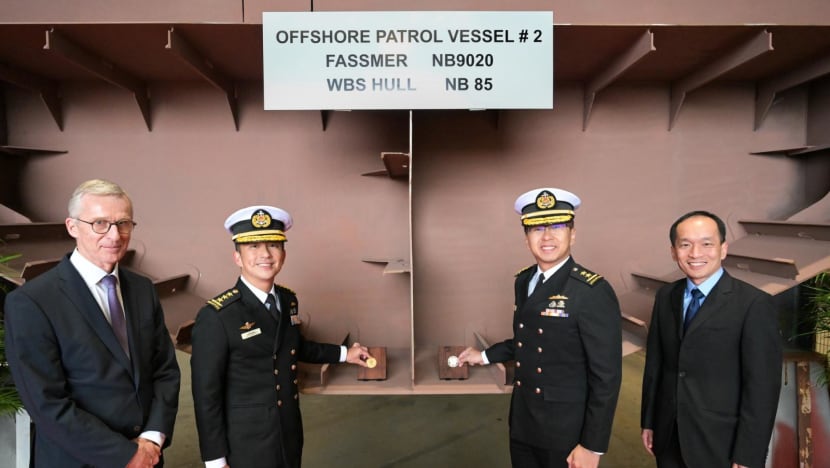SINGAPORE: To counter emerging threats arising from unmanned systems, the Republic of Singapore Navy (RSN) is looking at incorporating cheaper, off-the-shelf drones into its suite of capabilities; and will upgrade its ships with guns known to be effective against fast-moving targets. These updates, shared by Chief of Navy Rear Admiral Sean Wat on Friday (May 9), come amid the maritime domain experiencing what he called an “increasingly complex set of challenges”. Traditional issues such as sea robberies and piracy; trafficking; and illegal unreported and unregulated fishing are still present in the region, though kept under control by littoral states. There is also the risk of maritime terror attacks which RSN is monitoring; while geopolitical rivalries and unresolved territorial disputes play out in the form of increasingly aggressive and assertive postures and actions at sea, he said. It is against this backdrop that the RSN is exploring how it can go beyond higher-end unmanned systems, to adapt lower-cost and commercially off-the-shelf drones, said RADM Wat in a written interview with the media after the International Maritime Defence Exhibition and Conference Asia 2025. “This is critical as it would allow us to shorten the capability-development cycle to effectively deal with emerging threats,” he said. “We envisage that we will operate a mix of higher-end, purpose-built drones, as well as low-cost drones to fulfil the range of our operational needs.” When it comes to countering these proliferating unmanned aerial systems (UAS), the Singapore navy needs to develop innovative and practical solutions, its chief added. “For example, to deal with threats posed by drones, both in the air and surface domains, the RSN will be progressively upgrading our ships with the Strales 76mm guided gun,” said RADM Wat. “This also offers a cost-effective solution as compared to other conventional weapons such as higher-end missiles. We are also exploring other solutions.” The Strales gun can use Driven Ammunition Reduced Time of Flight (DART) projectiles that are guided by a radio beam that follows the target through a homing system. The Singapore navy already uses a mix of missile and gun platforms to counter air and surface threats. Last month, it posted on Facebook about using the Aster missile system to take down an aerial drone off the coast of France, during a live-firing exercise.
Related:
Singapore’s navy set to get 2 more Invincible-class submarines from 2034

Singapore military to build new counter-UAS capabilities, embrace dual-use technology
NEW PATROL VESSELS
RADM Wat also gave updates on the navy’s future platforms, including Singapore’s first two offshore patrol vessels which are expected to be introduced from 2028. Earlier in April, a keel-laying ceremony – which customarily marks the start of full production – was conducted for the two ships in Lithuania. The navy chief noted there was “good progress” in the construction of the vessels, which are based on a “proven” design by the German Federal Police and designed with high manoeuvrability to operate in Singapore’s congested waters. “The ships will be equipped with a suite of lethal and less-lethal capabilities to provide flexibility and calibrated responses against a wide spectrum of maritime threats,” said RADM Wat, adding that they will progressively replace the Maritime Security Response Flotilla’s existing Sentinel-class vessels.










